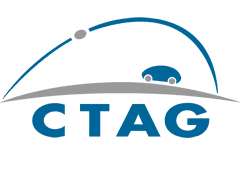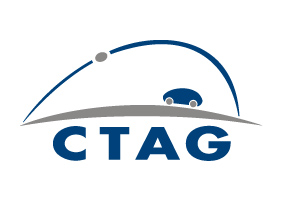 The demonstration took place during the C-V2X Plugtests™, an event organized by the 5G Automotive Association (5GAA) and the European Telecommunications Standard Institute (ETSI) in Germany.
The demonstration took place during the C-V2X Plugtests™, an event organized by the 5G Automotive Association (5GAA) and the European Telecommunications Standard Institute (ETSI) in Germany.
This event, held from March 28th to April 1st, brought together organisations, institutions and key companies in the C-V2X ecosystem for the certification and development of these technologies in the automotive industry.
The C-V2X Plugtests™ also included a workshop to discuss the future of C-V2X systems in the automotive sector, as an introduction to the demonstrations carried out by CTAG, Vodafone, Commsignia and Allbesmart.
CTAG’s demonstration highlighted its latest advances in the field of interoperability with 5G technology, a crucial technology for the development of intelligent transport systems. For the development of the scenarios, CTAG installed its communications unit (HMCU) both in the infrastructure (RSU) and in the vehicle (OBU). The use cases shown included Traffic Jams Warning, Road Works Warning, Hazard On The Road Warning, Time To Green and In-Vehicle Signage.
The objective of these tests has been to assess the level of interoperability and validate the understanding of the standards, concluding with a high success rate shown by a very positive level of interoperability between the many providers.
More information about C-V2X Plugtests™ at https://5gaa.org/news/5gaa-partnered-with-etsi-and-dekra-to-showcase-c-v2x-interoperability-and-discuss-deployment-during-the-plugtests-at-the-dekra-automobil-test-center-in-klettwitz-germany/




 Se trata de un proyecto liderado por Telefónica, en colaboración con Nokia, CTAG, Ineco, Stellantis y SICE, en el que se ha sensorizado y dotado de cobertura 5G al túnel de Cereixal en la A-6 (Lugo), lo que supone un avance hacia la carretera inteligente que se comunica con los vehículos conectados y ofrece asistencia a la conducción.
Se trata de un proyecto liderado por Telefónica, en colaboración con Nokia, CTAG, Ineco, Stellantis y SICE, en el que se ha sensorizado y dotado de cobertura 5G al túnel de Cereixal en la A-6 (Lugo), lo que supone un avance hacia la carretera inteligente que se comunica con los vehículos conectados y ofrece asistencia a la conducción.




